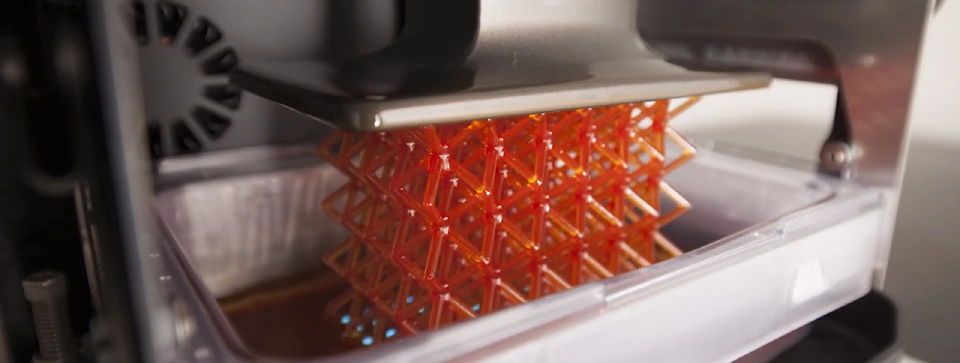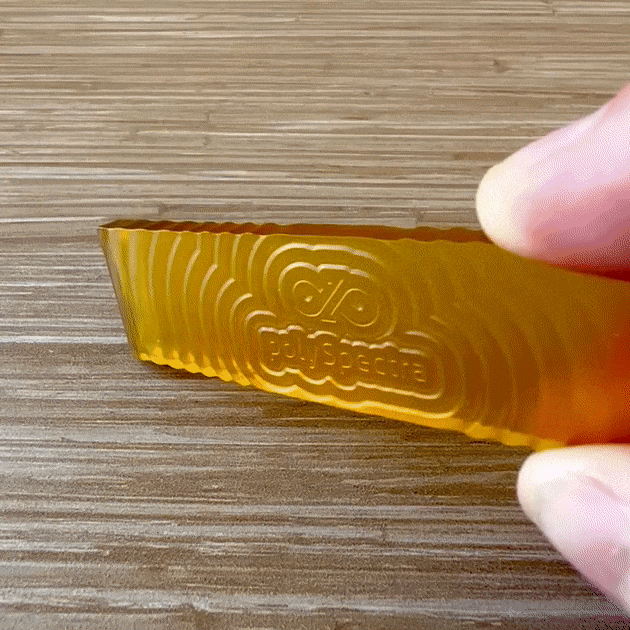Photopolymer Resin For Industrial Applications
We are very pleased to share news with you regarding the awarding of a research grant from the US Department of Energy (DoE) to further develop photopolymer resins for industrial applications.
polySpectra, along with our main partner Fortify, have been awarded USD $3M to research and develop additive manufactured tooling to help decarbonize traditional tooling manufacturing processes such as injection molding.
The funding will allow further development of direct additive tooling for automotive lightweighting using our Cyclic Olefin Resins, which are based on Nobel Prize-winning chemistry from Caltech.
Together with Fortify and their own custom material platform and expertise, we will continue to research rugged, temperature and chemical resistant composite photopolymer resin tooling solutions intended to replace traditional metal injection molded tooling.
3D Printed Tooling
The proposed DoE project will combine the additive manufacturing technologies of polySpectra’s own COR Alpha resin with the magnetic particle alignment capabilities of Fortify’s Fluxprint system, to develop technologies for the production of long-life AM tooling.
With the funding from the DoE, polySpectra and our partners will continue to develop the technology required to unlock a new paradigm of automotive manufacturing. Through our collaborations we will deliver next generation polymer tooling with a 10x reduction in lead times/costs than CNC, and 10x more durability than current AM mold tooling on the market.
Current polymer AM molds are capable of producing in the order of a few dozen to a couple of hundred parts before they wear and need to be replaced.
On the other hand, a metal mold tool is capable of tens of thousands (even hundreds of thousands) of cycles before it needs to be replaced. A metal mold can produce a lot of parts, very quickly and at a low cost-per-part.
For metal AM tooling, the process time and surface roughness requirements result in costs and lead times that are only marginally better than CNC.
So currently, metal tooling still offers the best combination of surface finish, dimensional stability and part cost.
But that high throughput and low cost-per-part comes at a high initial cost via the mold manufacturing, and the injection molding process itself. And naturally, the processes in metal mold making require high speeds for cutting metal and high temperatures for molding. These process steps impart a high energy cost.
Durable
Durable plastic AM molding sits at a sweet spot in terms of financial and energy costs, and can potentially produce molded parts of equal (or greater) quality when compared to when using metal tooling.
Consequently, 3D printed mold tooling now provides the option for entrepreneurs to produce lower quantities of injection molded parts at costs that were previously reserved for those wishing to produce tens of thousands of parts.
With the ongoing development of durable composite systems with our partners, the barrier to entry for injection molding is about to get a lot lower.
Durability is the key word here, as it directly affects the factors of interest when designing economically viable tooling processes. Such factors include cycle time, and cycles to failure.
Until now, many printed plastics have suffered from a variety of weaknesses including poor working temperatures, brittleness, poor impact resistance, thermal degradation, UV degradation and more. This has been especially true for additive manufacturing resins.
By developing COR Alpha, we are able to provide a robust, chemically resistant resin, capable of resisting jet fuel, salt water, and most organic solvents. Our Cyclic Olefin Resins (of which COR Alpha is our first commercial product) will form the base for advanced composites with magnetically aligned fiber orientation, creating strong, dimensionally stable and isotropic molds with enhanced durability and wear resistance.
All of this is in service of decreasing the cycle time between molded parts, and increasing the tool life, so that fewer mold replacements are required. These are key parameters that determine if AM tooling can compete economically with traditional metal tooling.
The addition of composite particles alters the mechanical properties of the composite system, increasing the durability and overall tool life. Additional surface treatments can further enhance the durability and surface finish of AM mold tooling.
With increased tool life and reduced cycle times predicted by our research, we can keep the flexibility and low energy requirements of additive manufacturing while reaching production runs of similar size and quality as when using a metal tool.
Ultimately, the goal of this project is to manufacture robust, low cost AM tooling that will be used in molding lightweight parts for automobiles.
This will have the dual effect of reducing carbon from the manufacturing process as well as reducing emissions and fuel consumption for the driver by their use of lightweight molded components.
Accessible Injection Molding
Injection molding with metal tools is more suitable for high production runs, often needing runs in the area of 50,000+ to become a worthwhile investment. Additive manufacturing can only currently compete with injection molding at small production runs, in the order of a few dozen parts.
It should be noted that even if a company wishes to produce enough parts to make injection molding a viable option for mass production, the costs of designing and manufacturing metal mold tooling is a significant investment for smaller companies.
To that end, there is a large population of entrepreneurs who are unable to access traditional injection molding due to those initial costs and other barriers to entry. And there are a lot of potential entrepreneurs who are put off by the production numbers needed to make it viable.
Our mission is to help lower the barriers to entry for innovators from underrepresented populations, and we hope to do this by making professional-quality injection molding accessible in terms of initial costs, and also to those who want to make smaller production runs.
Research
This funding was part of an overall $57.9 million of funding from the Advanced Manufacturing Office (AMO) that was awarded to 30 projects (including our own at polySpectra).
The investment from AMO is aimed at accelerating technologies and processes that contribute to more economical and ecologically friendly forms of manufacturing.
Our research will be ongoing with current partners and grant co-awardees at National Renewable Energy Laboratory, MPI Systems, RePliForm Inc, and Oak Ridge National Laboratory.
ORNL and MPI will provide their expertise in metrology and testing to validate the durability and cycle times of the composite mold tooling. NREL will build a techno-economic analysis and life cycle assessment to confirm projected economic and energy benefits.
Our partners at RePliForm will offer their expertise in the development of electroplating processes and materials that can extend the durability of the AM toolings a further up to 5x higher than is currently capable.
“Under this research grant, we will leverage Nobel-winning chemistry to directly 3D-print these robust composite Cyclic Olefin Resins,” said Weitekamp.
“The goal of the DOE project is to bring unprecedented materials durability to additive manufacturing, which will provide the industry with immense leverage for the decarbonization and reshoring of the US manufacturing sector.”
If you’d like to know more about COR Alpha’s properties you can download the data sheet here












